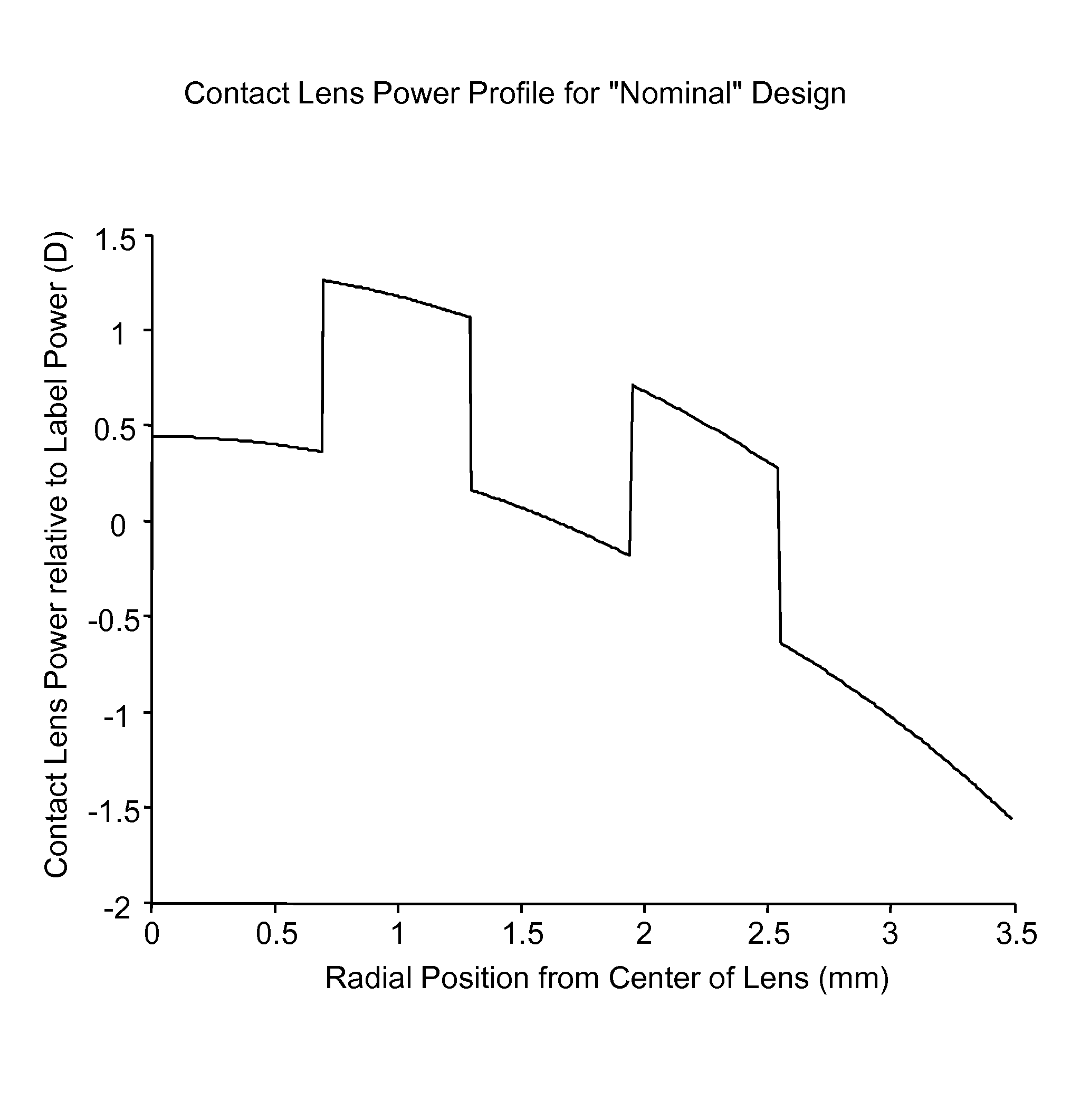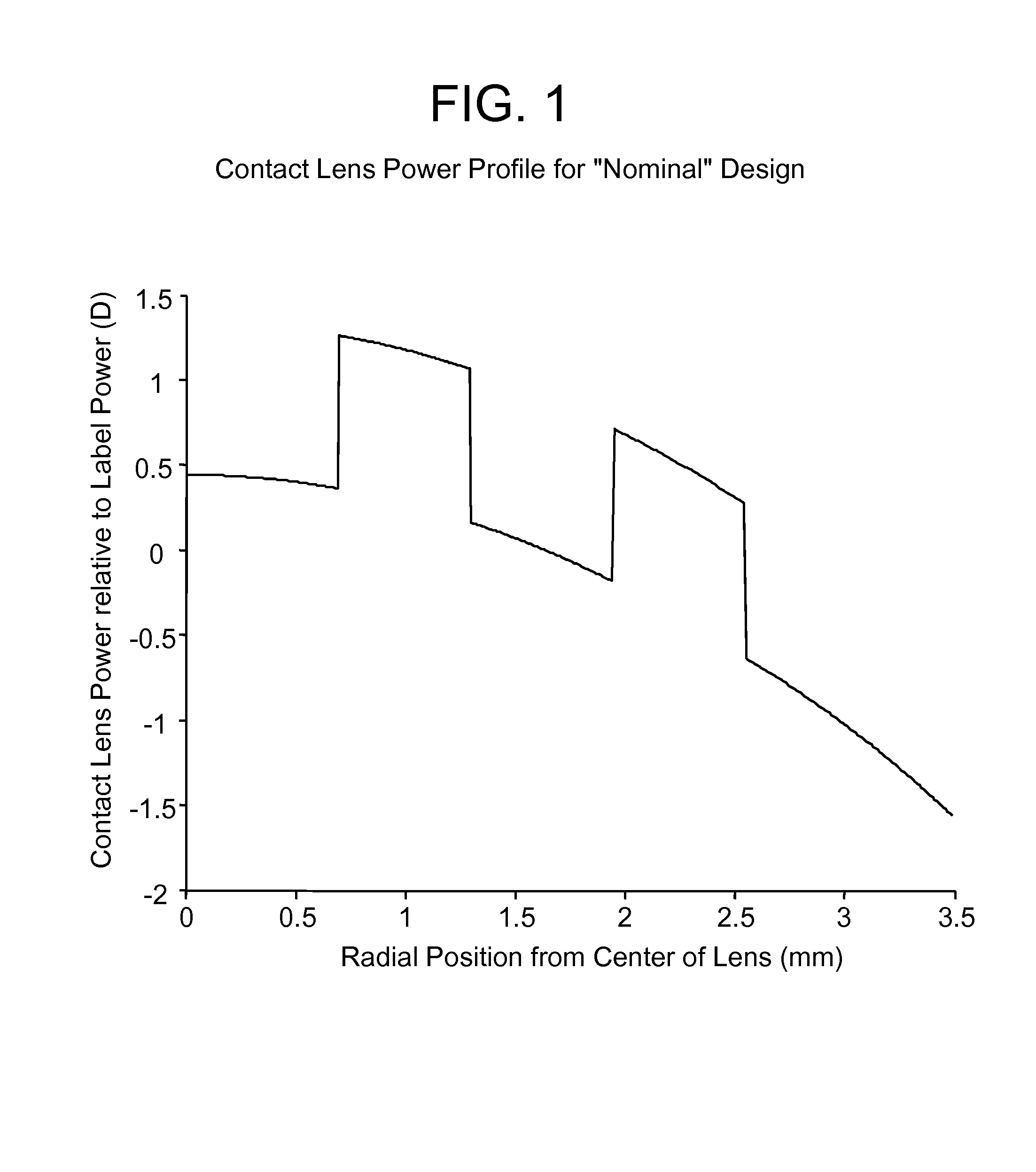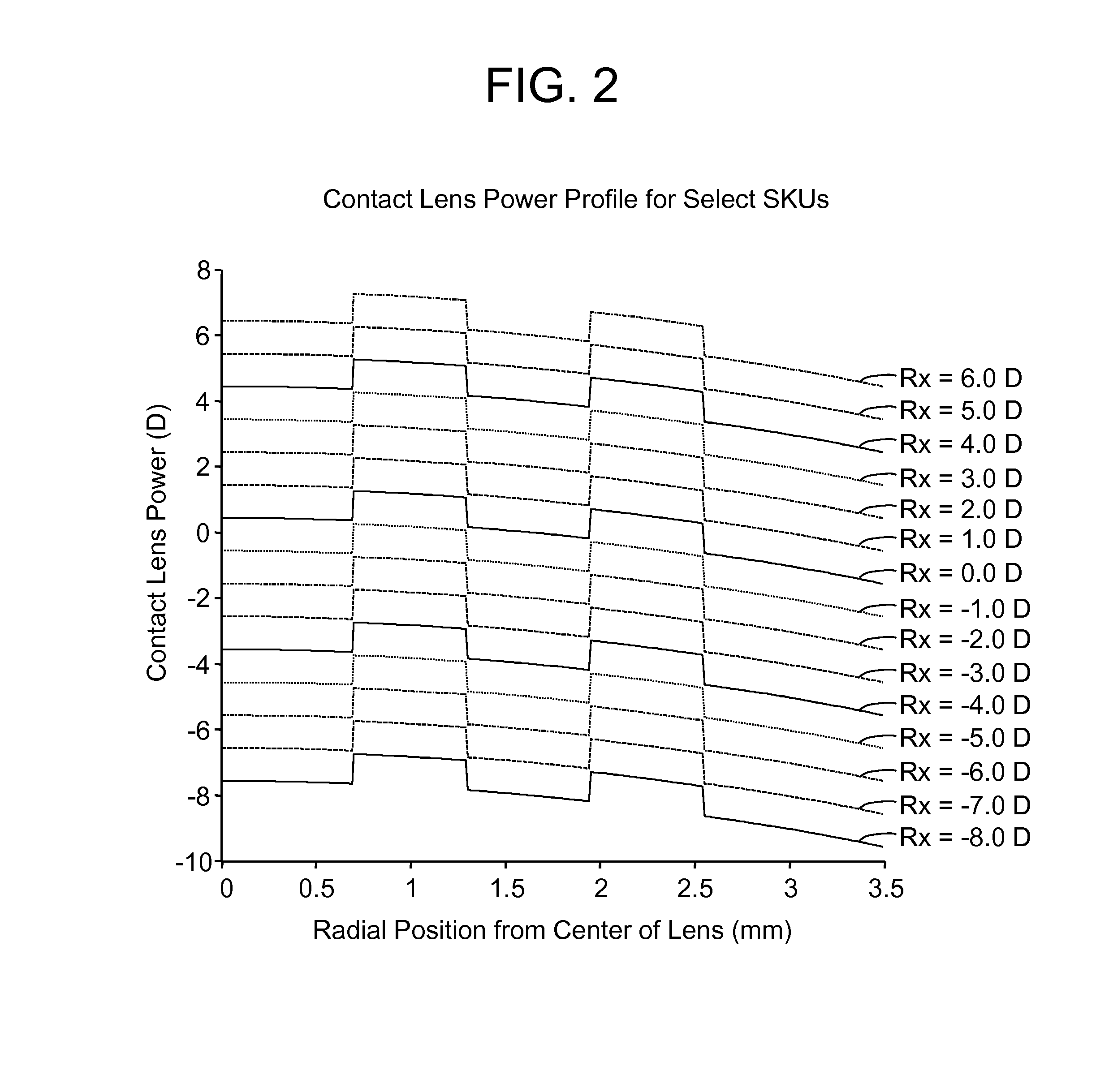Presbyopia lens with pupil size correction based on level of refractive error
a technology of presbyopia and pupil size correction, which is applied in the field of contact lenses for correcting presbyopia, can solve the problems of less able to accommodate, bending or bending of natural or crystalline lenses, and crystalline lenses gradually becoming more rigid, so as to improve visual acuity and improve visual experience for users
- Summary
- Abstract
- Description
- Claims
- Application Information
AI Technical Summary
Benefits of technology
Problems solved by technology
Method used
Image
Examples
Embodiment Construction
[0046]The present invention is directed to methods for adjusting the optical designs for lenses for the correction of presbyopia to account for changes in pupil size to ensure that the design gives the same visual experience independent of the level of ametropia of the patient and the resultant lenses. In accordance with one exemplary embodiment, the method provides a means to analytically scale a power profile for a design at one prescription to the full range of required prescriptions to provide similar visual performance across the full range of ametropia. This is the analytical scaling method. In accordance with another exemplary embodiment, the method provides a means to scale a power profile for a design at one prescription to the full range of required prescriptions to provide similar visual performance across the full range of ametropia using an optimization method that utilizes as the merit function or metric that ensures that the visual performance experienced by the users...
PUM
 Login to View More
Login to View More Abstract
Description
Claims
Application Information
 Login to View More
Login to View More - R&D
- Intellectual Property
- Life Sciences
- Materials
- Tech Scout
- Unparalleled Data Quality
- Higher Quality Content
- 60% Fewer Hallucinations
Browse by: Latest US Patents, China's latest patents, Technical Efficacy Thesaurus, Application Domain, Technology Topic, Popular Technical Reports.
© 2025 PatSnap. All rights reserved.Legal|Privacy policy|Modern Slavery Act Transparency Statement|Sitemap|About US| Contact US: help@patsnap.com



